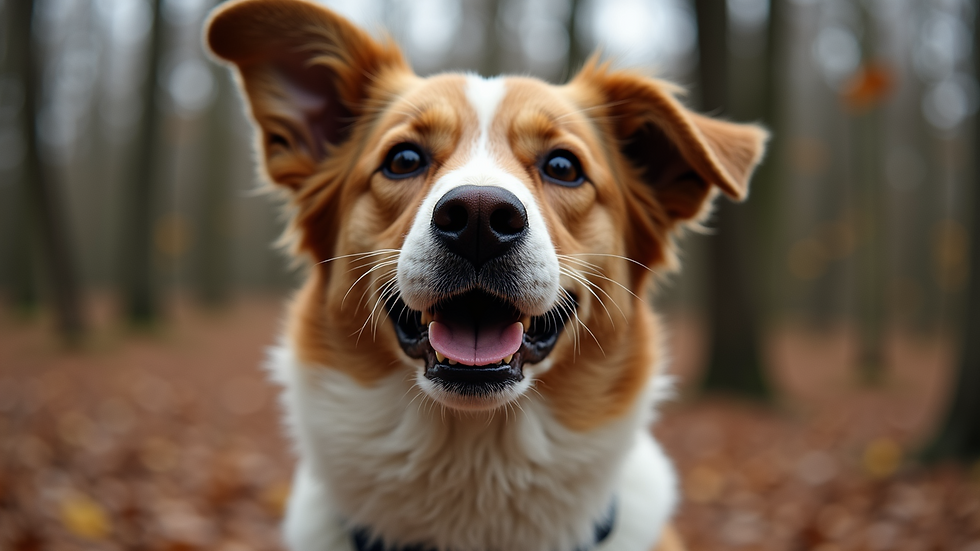Discover Effective Behavior Modification for Dogs
- Klint
- Sep 16
- 4 min read
Training your dog is one of the most rewarding experiences you can share. It builds trust, strengthens your bond, and helps your furry friend become a well-mannered member of your family. I’ve learned that using positive dog training techniques makes the process enjoyable and effective. These methods focus on rewarding good behaviour rather than punishing mistakes. If you want to see your dog thrive, keep reading to discover practical tips and insights that work.
Why Positive Dog Training Techniques Work Best
Positive dog training techniques rely on encouragement and rewards. Dogs respond well to kindness and clear communication. When you reward good behaviour, your dog learns what you expect and feels motivated to repeat those actions. This approach avoids fear and confusion, which can happen with harsh corrections.
For example, if your dog sits calmly when you ask, immediately offer a treat or praise. This simple act tells your dog that sitting nicely is a great choice. Over time, your dog will happily follow commands because it associates them with positive outcomes.
Here are some key benefits of positive training:
Builds trust and confidence in your dog
Creates a joyful learning environment
Reduces stress and anxiety during training
Encourages long-lasting good habits
Using treats, toys, or affection as rewards works well. You can also use a clicker to mark the exact moment your dog does something right. This clear feedback helps your dog understand what behaviour earns rewards.

Simple Positive Dog Training Techniques You Can Try Today
Starting with easy exercises helps your dog gain confidence. Here are some positive dog training techniques you can use at home or during walks:
Sit and Stay
Ask your dog to sit. When they do, say “Yes!” or click your clicker, then give a treat. Gradually increase the time they stay seated before rewarding.
Come When Called
Use a happy tone and say your dog’s name followed by “come.” Reward your dog with a treat or playtime when they come to you.
Loose Leash Walking
Stop walking when your dog pulls on the lead. Resume only when the lead is slack. Reward your dog for walking beside you calmly.
Leave It
Hold a treat in your closed hand and say “leave it.” When your dog stops trying to get the treat, reward them with a different treat from your other hand.
Consistency is key. Practice these exercises daily in short sessions. Keep training fun and end on a positive note to keep your dog eager for the next session.
What is a Red Flag in Dog's Behaviour?
Recognising red flag behaviours early can prevent problems from escalating. These behaviours often signal stress, fear, or discomfort. Some common red flags include:
Growling or snarling when approached
Avoiding eye contact or turning away
Stiff body posture or raised hackles
Excessive barking or lunging at people or other dogs
Sudden changes in behaviour or mood
If you notice these signs, it’s important to address them gently and seek professional advice if needed. Ignoring red flags can lead to more serious issues like aggression or anxiety.
For example, if your dog growls when someone reaches for their food bowl, don’t punish them. Instead, work on building trust around mealtimes using positive reinforcement. Reward calm behaviour near the bowl and gradually desensitise your dog to your presence during feeding.

How to Use Behavior Modification Techniques for Dogs Effectively
When your dog shows unwanted behaviours, it’s time to apply behaviour modification techniques. These methods help change negative habits into positive ones. The key is patience and consistency.
Here’s how to start:
Identify the trigger: What causes the unwanted behaviour? It could be loud noises, other dogs, or certain situations.
Change the environment: Reduce exposure to triggers while training.
Reward alternative behaviours: Teach your dog what to do instead of the unwanted action.
Use gradual exposure: Slowly introduce triggers at a low intensity, rewarding calm responses.
Avoid punishment: Focus on positive reinforcement to encourage good behaviour.
For example, if your dog barks excessively at visitors, teach them to go to a designated spot and stay calm. Reward them for staying there quietly. Over time, your dog learns that calm behaviour brings rewards, not barking.
Remember, every dog is unique. What works for one may need adjusting for another. Don’t hesitate to ask for help from trainers or behaviourists if you feel stuck.

Tips for Maintaining Good Behaviour Long-Term
Training doesn’t stop once your dog learns a command. Maintaining good behaviour requires ongoing practice and reinforcement. Here are some tips to keep your dog well-behaved:
Keep training sessions short and frequent: 5-10 minutes daily works best.
Use rewards wisely: Gradually reduce treats and replace them with praise or play.
Be consistent: Everyone in the household should use the same commands and rules.
Socialise your dog: Regular exposure to new people, dogs, and environments builds confidence.
Stay patient and positive: Dogs learn at their own pace. Celebrate small wins!
By following these tips, you help your dog stay happy and well-mannered for life.
Training your dog with kindness and clear communication creates a joyful partnership. Using positive dog training techniques and behavior modification techniques for dogs helps you guide your companion towards good behaviour without stress. Remember, every step forward is a success worth celebrating. Your dog will thank you with loyalty and love!







Comments